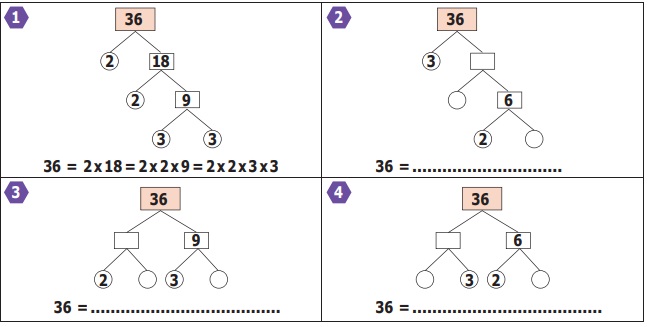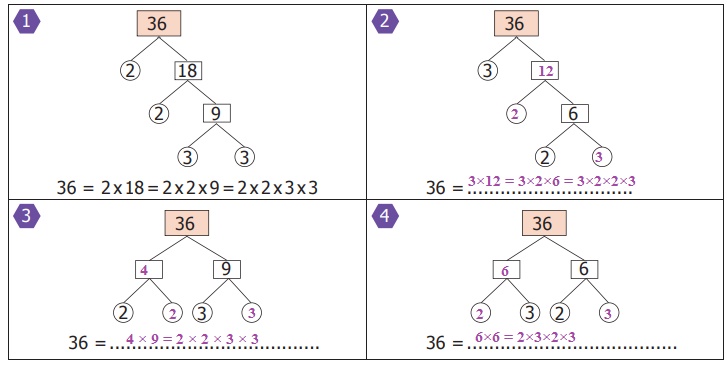Numbers | Term 2 Chapter 1 | 6th Maths - Prime Factorisation | 6th Maths : Term 2 Unit 1 : Numbers
Chapter: 6th Maths : Term 2 Unit 1 : Numbers
Prime Factorisation
Prime
Factorisation
Expressing a given number as a product of factors
that are all prime numbers is called the prime factorisation of a
number. For example, 36 can be written as product of factors as
36 =1 × 36;
36 = 2 × 18;
36 = 3 × 12;
36 = 4 × 9;
36 = 6 × 6
Here, the factors of 36 can be found easily as 1,
2, 3, 4, 6, 9, 12, 18 and 36. Note that not all the factors of 36 are prime numbers. To find the prime factors of
36, we do the prime factorisation by the following methods.
1. Division Method
2. Factor Tree Method
1.
Division Method:
We can find the prime factorisation of
36 as follows:

In the above method, why do we start with 2 or 3
? why not with 5? Because, we know that 36 is not a multiple of 5 and hence not
divisible by 5. So, to find the prime factors of a number, it will be useful to
check for divisibility by smaller numbers like 2, 3 and 5 first and not take numbers
at random!
2. Factor Tree Method:
Another way to find the prime factorisation of a
number is to use a visual representation called factor
tree. As we add more branches, we
will see that this visual representation looks like an upside down tree. Let us
find the prime factorisation of 36 as shown below. (Solution for the first one is
given for you Complete the remaining).


What we observe from the above is that, the factors
of 36 are the same in all the cases, though the order of the factors is different.
Usually, the factors are ordered from the least to the greatest as 2 × 2 × 3 × 3.
Note
Since multiplication satisfies commutativity,
the order of the factors in the product does not affect the value of the number.
DO YOU KNOW?
All the prime numbers, except 2 and
3 can be expressed as 1 more or 1 less to
a multiple of 6 (For example, 37= 6 × 6 + 1). Explore this statement for other primes!
Related Topics